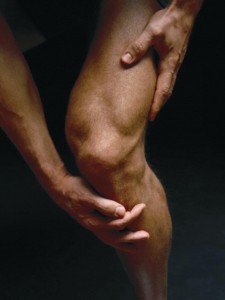 The omega-3 fatty acids play an important role in keeping the heart, kidneys, and digestive system healthy. The body needs omega-3 fatty acids to make prostaglandins that regulate blood clotting, hormone production, and inflammation, pain, and swelling in the body. There is no Recommended Dietary Allowance (RDA) for omega-3 fatty acids, but you should try to get one gram a day.  Nutritionists generally recommend eating cold-water fish 2 to 3 times a week; the oilier the fish, the more omega-3 it has.
The omega-3 fatty acids play an important role in keeping the heart, kidneys, and digestive system healthy. The body needs omega-3 fatty acids to make prostaglandins that regulate blood clotting, hormone production, and inflammation, pain, and swelling in the body. There is no Recommended Dietary Allowance (RDA) for omega-3 fatty acids, but you should try to get one gram a day.  Nutritionists generally recommend eating cold-water fish 2 to 3 times a week; the oilier the fish, the more omega-3 it has.
Â
Samples of fish with omega-3 fatty acids:
Salmon, Atlantic 3.1-3.7 grams per 6 oz cooked serving
Sardines, packed in oil 2.8 grams per 3 oz serving
Salmon, Coho 1.8-2.2 grams per 6 oz cooked serving
Herring, Kippered 1.8 grams per 3 oz serving
Trout, Rainbow 1.7-2 grams per 6 oz cooked serving
Swordfish 1.4 grams per 6 oz cooked serving
Oysters 1.1 grams per 3 oz steamed serving
Mackerel, canned 1 gram per 3 oz serving
Sole or Flounder 0.9 gram per 6 oz cooked serving
Striped Bass (Rockfish) 0.8 gram per 6 oz cooked serving
Tuna, White, Canned 0.7 gram per 3 oz serving
Tuna, Fresh 0.5 gram per 6 oz cooked serving
Warnings
The U.S. Environmental Protection Agency warns against excessive consumption of tuna, shark, swordfish, king mackerel and tilefish due to their high levels of mercury. Women who are pregnant or lactating and young children should avoid eating these fish altogether. The agency does note that eating two meals each week — about 12 ounces total — of seafood like salmon, catfish and shrimp is acceptable.
For parents: Here are a few recommendations you can help your children set up their computers to avoid the risk of life-long poor posture, cumulative trauma disorders or repetitive strain injuries. You should be concerned not only what your children are viewing on the Internet, but also how they are sitting while in front of their computers.
The following advice is similar to that which I would give to an adult, simply adapted for a smaller body.

- Monitor should be located directly in front of the body with the eyes directed at the upper 1/3 of the screen. For a child, raise the chair so their eyes are at the correct level.
- Feet should reach the floor. If they don’t, a stool should be placed under the feet so that knees are bent at approximately 100 degrees.
- Elbows should be at 90 to 100 degrees without bending wrists to rest on the keyboard. An adjustable keyboard tray, which can be lowered and angled for each individual user, is a good investment. Keep the elbows close to the body, without having to reach for the mouse and/or keyboard.
- A good chair should support the back with knees resting two inches from the front edge. Place a pillow, or lumbar back support, behind the child’s back for support and to move them forwards so their knees hang free
- Head and shoulders should be relaxed and neutral. Watch for their heads jutting forward.
- Watch the time! Breaks should be taken every 20 to 30 minutes.
Most children, and adults, are now working longer times on the desktops, laptops, tablets and smartphones. It is so important to train our bodies to have better postures as early as possible.
Parents should have their children’s posture assessed once a year by their chiropractors to facilitate proper spinal health in their growing spine.

Vitamin E (Tocopherol)
Usage: Reduce the risk of heart disease and protecting the body from prostate and bladder cancers.  For those who plan to apply Vitamin E to the skin, you should buy tocopherol not the tocopheryl forms, as the former absorbs better but the latter may have a slightly better shelf life.
Who:Â Primary people with – Atherosclerosis, Diabetes, High Cholesterol, Immune function, Osteoarthritis, Yellow nail syndrome
Secondary with – Alzheimer disease, Angina, Athletic performance, Cold Sores, Rheumatoid Arthritis, Premenstrual syndrome, Wound healing
Symptoms:Â Vitamin E deficiencies are rare.
Dosage:Â 400-800 IU (14 mg) per day for adults
Foods: Wheat germ oil, nuts, sunflower seeds, vegetable oils, olives, peanut butter, turnips, blueberry, papaya, kiwi, tomatoe, raw red pepper, whole grains, corn, egg yolks, and leafy green vegetables.
Check out the video from Footmaxx about their Metascan technology. We provide individually designed, custom Footmaxx orthotics to help you “walk the walk”.
http://www.youtube.com/watch?v=QiwDGle2QT0&feature=youtu.be
If you are interested in learning more, please call us at 604-270-1007 or email us at info@richmondchiro.com.
 OA = Osteoarthritis
OA = Osteoarthritis
    OA can affect any of the joints in your body. The effect of osteoarthritis is the wear and tear on the joining surfaces of the joint. This causes deterioration of the surfaces of the bone. When OA affects your knees, there are many conservative methods to help alleviate the symptoms.
Signs/Symptoms:Â Â Â Â
* Pain in the knee joint especially while weight bearing, and a lack of full extension (straightening) of the knee.
*Â May also experience swelling, Â joint line tenderness, knee cap (patellar) stiffness, decreased muscle strength around the joint, and the knee may feel hot.
Treatment:Â
*Â Use of modalities to relax muscles, aid circulation, decrease swelling, improve range of motion and decrease pain.
*Â Stretching exercises for the soft tissue around the joint to increase the range of motion.
*Â Manual techniques which are used to mobilize the knee cap and the joint to restore functional range of motion.
*Â Comfortable resting positions for the involved area, allowing the muscles to relax and taking the pressure off.
*Â Strengthening exercises for the muscles about the knee joint to increase joint stability
*Â Guidelines for gradual resumption of independent activities of daily living
*Â Nutritional supplements to assists in healing process and care of the affected joints.
*Â Gait analysis to improve walking with aid of custom orthotic insoles.
Â








